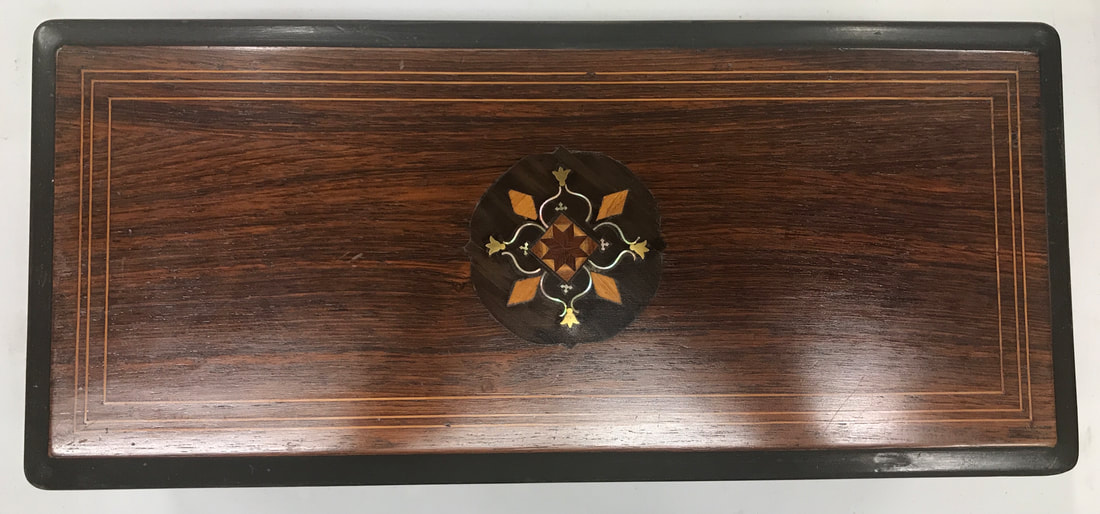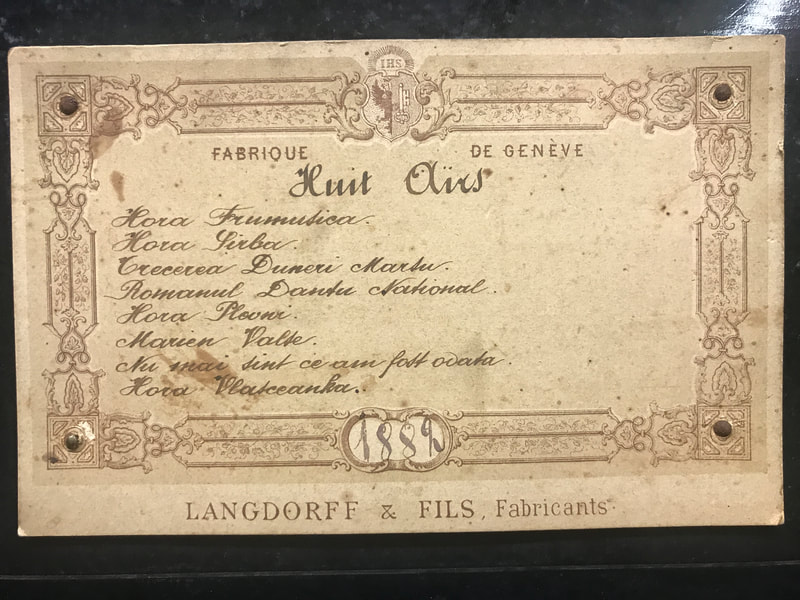8/78 Langdorff & Fils Cartel - Serial No. 20483 - 1882
A lovely box containing a rather nice movement by a known maker.
Unusually, the tune sheet is written in Romanian. All bar one tune is from that country. (see below)
Unusually, the tune sheet is written in Romanian. All bar one tune is from that country. (see below)
The mechanism has been fully restored including fitting a new mainspring, new stop lever, cylinder re-pinning, governor rebuild, comb tuned and dampers repaired.
The The Music Box Restorer tells me that there are twice as many sharp and flat notes on this comb than normal, making the mechanism even more special.
The case will be re polished shortly and the photos updated.
The The Music Box Restorer tells me that there are twice as many sharp and flat notes on this comb than normal, making the mechanism even more special.
The case will be re polished shortly and the photos updated.
Visit the Workshop page for this box
Tunes
Researching the tunes has been quite difficult, but with the help of a Romanian friend, we have good translations for the tune names, but still no composers, backgrounds or dates.
Researching the tunes has been quite difficult, but with the help of a Romanian friend, we have good translations for the tune names, but still no composers, backgrounds or dates.
|
|
1. Hora Frumusica (Trumpet Dance)
|
|
|
2. Hora Turbo (Stamp Dance)
|
|
|
3. Trecerea Dunării Marsu (Crossing The Danube March)
|
|
|
4. Romanul Gansu Nationale (Romanian National Dance)
|
|
|
5. Hora Plovni (Rain Dance)
|
|
|
6. Marien Valse (Mary's Waltz - German)
|
|
|
7. Nu Mai Sunt Ce Am Fost Odata (I am not what I once was)
|
|
|
8. Horo Vlasceanka (Vlasceanca Dance)
Vlasceanca is the name of a dancing / music school in Romania |


